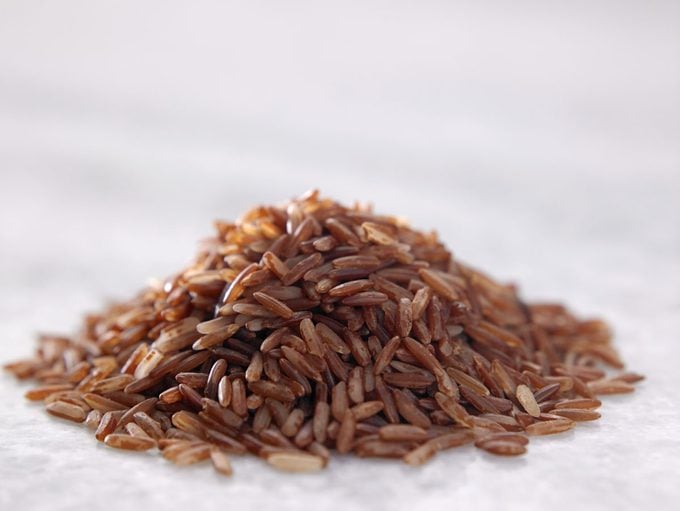Nutrition Tip: Choose Whole Grain Brown Rice
Whole grain brown rice is a healthy living staple, but it’s not only good for nutrition – it can also help in the prevention of heart disease, diabetes and obesity

Source: The Amazing Healing Powers of Nature, Reader’s Digest
Whole grain brown rice: for nutrition and overall health
Rice is a staple food for half of the world’s population, according to the United Nations Food and Agriculture Organization. And proof is mounting that the most nutrient-dense rice types’including brown, black and red’also bring good health. In fact, choose wisely and the rice you consume won’t only be a hearty part of many meals, but could also help keep away heart disease, diabetes and obesity.
Choosing the best rice
Choose whole grain rice’brown, black or red’over milled and polished white rice to enjoy this grain’s healthy fibre and nutrients.
Another way to maximize nutritional value: when buying bread, breakfast cereal, crackers and other baked goods that contain rice, look for the words ‘brown rice’ or ‘whole’ or ‘wholegrain’ before the type of rice.
Try rice bran oil. Rice bran oil is made from the inner hulls and nutrient-rich ‘germ’ of wholegrain rice. Use it in cooking or as a topping for salads and vegetables to glean heart benefits. In a 2005 Louisiana State University study, people who were given 2 to 3 tablespoons (15 to 30 milligrams) of rice bran oil daily for 10 weeks as part of a controlled diet saw their ‘bad’ or LDL cholesterol levels fall by 7 percent.
Why choose brown rice?
Brown rice is a fibre-rich grain championed by 1970s counterculture types and modern-day nutritionists. This form of rice has just the hull of the grain removed, leaving the rest of the kernel’and nutrients’intact. Compared to milled and polished white rice, brown rice has 67 to 90 percent more vitamin B1, B3 and B6; 50 percent more manganese and phosphorus; 60 percent more iron and 100 percent more fibre. This superior profile is responsible for a cornucopia of health benefits that make switching from white to brown a worthwhile swap.
In a 2003 Harvard School of Public Health study of 74,000 women, those who got plenty of dietary fibre from brown rice and other whole grains were 49 percent less likely to gain weight than women who ate mostly refined grains such as white rice. Hearts benefit, too. Switching to all whole grains including brown rice for 10 weeks helped subjects reduce their blood pressure and shed an average of 0.9 kilograms (2 pounds) apiece in a 2006 study run by the US Department of Agriculture.
Get to know: black rice
In China, black rice is widely used to make porridge and sweet snacks such as rice cakes, though this type of rice is largely overlooked by the West. You may see black rice labelled ‘forbidden rice”it was once so revered in China that only the emperor was permitted to eat it. This sweet, sticky variety, which takes on a dark purple hue when cooked, is emerging as a superfood packed with a surprise dose of cell-protecting antioxidants.
Why? A spoonful of dry black rice contains more anthocyanins (health-promoting antioxidants) than a spoonful of blueberries’plus more fibre and vitamin E, according to Zhimin Xu of Louisiana State University Agricultural Center in Baton Rouge, Louisiana. In a 2010 study, Xu analysed samples of black rice and found that its anthocyanins are water-soluble. That means they may be able to reach body tissues that other nutrients can’t get to. In another 2010 study, researchers at South Korea’s Ajou University found in a mouse study that black rice anthocyanins have powerful anti-inflammatory effects. Researcher Sun Phil Choi noted that this means black rice could have potential as a therapeutic agent for the treatment and prevention of diseases associated with chronic inflammation, including diabetes, heart disease, arthritis and even some cancers.




